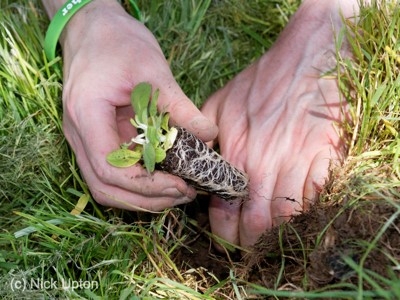Marsh fritillary. Credit: Michael Sammes
Braydon Forest Marsh Fritillary Project
The beautiful marsh fritillary butterfly was once found across the UK, but has suffered a catastrophic decline. North Wiltshire was one of its former strongholds in the 1990s, especially in the Braydon Forest, an area where a few colonies continue to hold on. A big factor in the decline of this iconic butterfly is the loss of suitable habitat.
Critically, marsh fritillaries need devil's bit scabious, a pretty, purple flowering plant often found in hay meadows. The butterflies need these in order to lay its eggs and as act as food for the caterpillars.
Regular cutting of meadows, even if they do contain devils bit scabious, removes the food plant and destroys the larval webs.

WildNet - Amy Lewis
Forty-four acres of land, once at risk from development, was purchased thanks to £442,941 of funding. The purchase has secured vital habitat at Upper Minety in Wiltshire, and is supporting the long-term recovery for the rare, but once flourishing, marsh fritillary butterfly.
The purchase of the land means that this site is now being restored through green hay and plug planting to create the wildflower-rich, shrubby pasture land favoured by the butterfly.

Volunteer planting devils-bit scabious plants. Credit: Nick Upton
